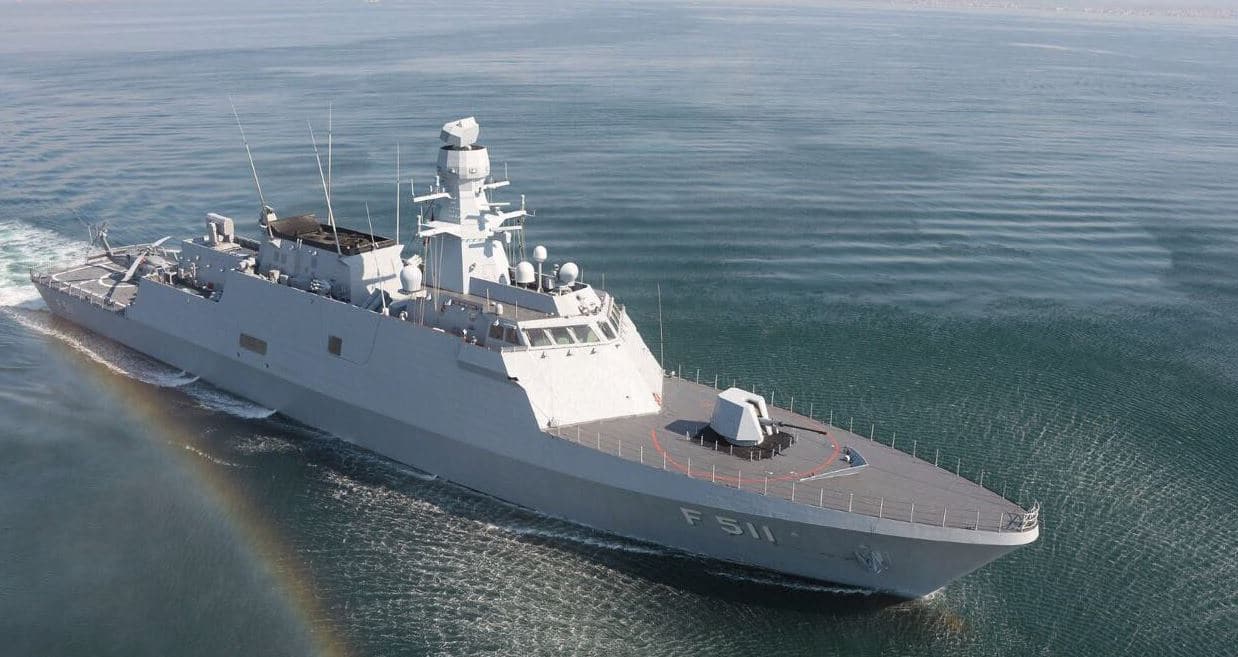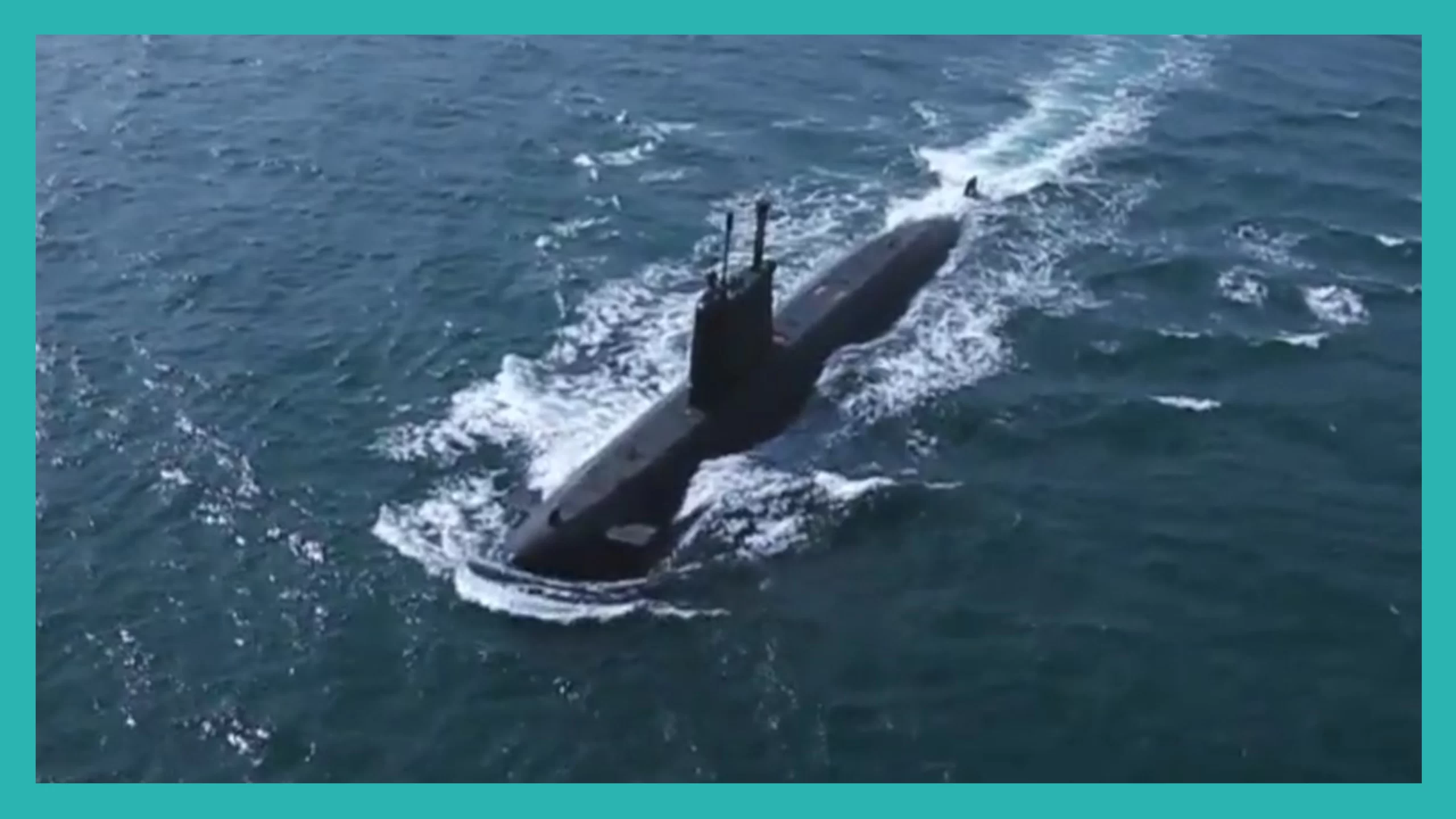3789Views 0Comments
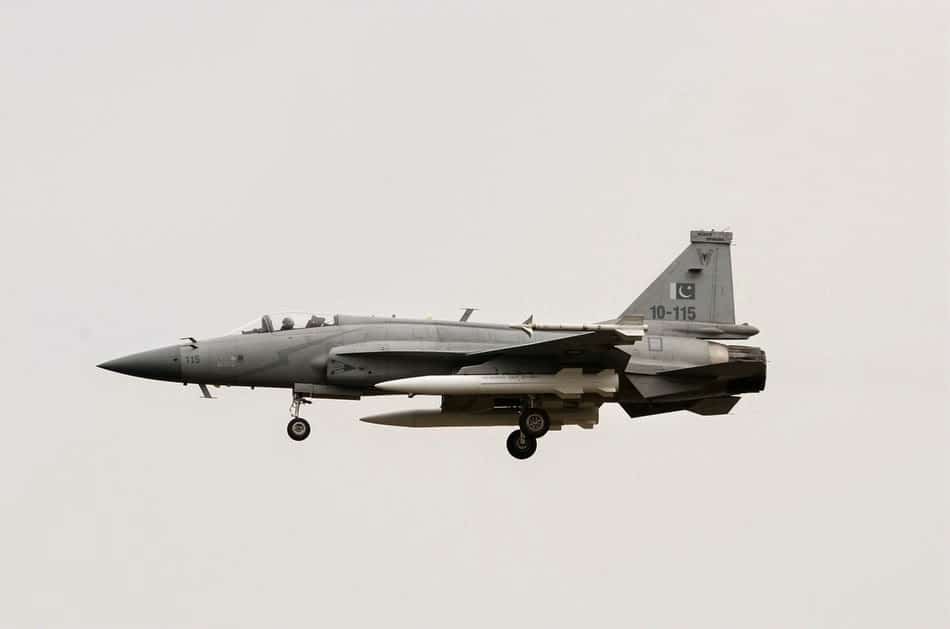
The JF-17’s air-launched rocket (CM-400AKG) Quwa Premium
In its disclosure for 2017-2018, Pakistan’s Ministry of Defence Production (MoDP) revealed that it procured 60 CM-400AKG missiles for $100 million US. The following article — previously a Quwa Premium piece from February 2018 but now a freely available sample — outlines the technical nature of the CM-400AKG and its applicability to the Pakistan Air Force’s (PAF) requirements.
While rooted as a replacement for the Pakistan Air Force’s (PAF) Dassault Mirage III/5, Chengdu F-7P and Nanchang A-5 combat aircraft, the JF-17 can amount to more than a purely short-range ground-attack or point-defence/air defence fighter (i.e. the roles assumed by its predecessors). The JF-17 is a co-production effort between the Aviation Industry of China (AVIC) and Pakistan Aeronautical Complex (PAC), the latter manufacturing 58% of the fighter under the workshare agreement (alongside final assembly for the PAF).[1]
Besides recapitalizing the PAF fighter fleet, the JF-17 imbued the PAF’s mainstay fleet with contemporary air combat capabilities, including the ability to widely deploy stand-off range weapons (SOW). Currently, the PAF is configuring the JF-17 to carry the China Aerospace Science and Industry Corporation (CASIC) C-802 anti-ship missile (AShM) and Global Industrial & Defence Solutions (GIDS) Range Extension Kit (REK) precision-guided bomb (PGB) suite for MK-80-series general purpose bombs (GPB).
However, AVIC’s marketing portfolio shows that the JF-17 can be – depending on customer requirements – configured with a diverse array of SOWs, including the unique CM-400AKG AShM. The CM-400AKG has been tied as a SOW option for the JF-17.[2] It is unclear if the PAF itself inducted or is planning to induct the CM-400AKG, despite labelling it as an “aircraft carrier killer” on multiple occasions (note: the MoDP confirmed that the PAF procured 60 CM-400AKGs in 2017-2018).[3][4] Nonetheless, the CM-400AKG shows that thought – and development – has been paid to expanding the JF-17’s SOW options.
The CM-400AKG anti-ship missile (AShM)
When introduced as a weapon option for the JF-17, the CASIC CM-400AKG was hinted as an analogous solution to the BrahMos, India’s supersonic-cruising AShM. This comparison was drawn based on the stated top-speed of the CM-400AKG, Mach 4+ according to the previous Project Director of the JF-17, Air Commodore Mahmood Khalid.[5] However, while seeming similar in the intended role (anti-ship warfare) and capability (i.e. supersonic speed), the CM-400AKG is a fundamentally different missile design or concept than the BrahMos and other AShMs serving with the PAF and the Pakistan Navy (PN).
In contrast to the BrahMos, Exocet, C-802A and the recently-announced Harba AShM, the CM-400AKG is powered solely by a solid-fuel rocket motor. In other words, the CM-400AKG does not use an air-breathing miniature turbojet or turbofan engine, which – besides using liquid fuel – is also more fuel efficient, supporting sustained flight at longer ranges. In addition, air-breathing designs can also undertake terrain-hugging/sea-skimming flight, i.e. low-altitude flight for avoiding radar coverage and reducing the reaction time for countermeasures. These attributes are not available to the CM-400AKG.
Rather than sea-skimming, CASIC stated that the CM-400AKG relies on high-altitude launch, which CASIC claims lends to “higher aircraft survivability”.[6] According to IHS Jane’s, the CM-400AKG “climbs to a high altitude and terminates with a high-speed drive on the target.”[7] In effect, it appears that the CM-400AKG operates with an arc, thus owing to its quasi-ballistic missile ties. Besides its flight trajectory, the CM-400AKG reportedly has a range of 180-250 km, using a terminal-stage seeker – optional between imaging infrared (IIR) and active radar-homing (ARH).[8] However, the terminal-stage element is – as per CASIC – best suited for ‘slow-moving targets’, with overt mention of aircraft carriers.[9] The CM-400AKG’s warhead options include blast fragmentation and penetration.[10]
The total weight of the CM-400AKG is unclear as there are conflicting reports. For example, Jane’s lists the total weight at 400 kg, while Flight Global states (referencing AVIC) that the missile weighs 910 kg.[11] If the CM-400AKG weighs 400 kg, then it would be markedly lighter than commonplace cruising AShM, such as the CASIC C-802 and MBDA Exocet (which weigh 700-800 kg). However, the JF-17 can be equipped with two C-802 or CM-400AKG (see photos below), so the CM-400AKG being heavy does not limit the JF-17’s payload options. Chinese observers note that the CM-400AKG likely draws its lineage from the SY-400 short-range ballistic missile (SRBM), a missile with a range of 150-200 km and 200-300 kg warhead.[12][13]
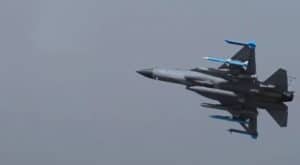
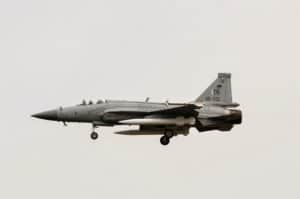
While described as a ballistic missile and also sharing the same core inputs (e.g. rocket motor) of a ballistic missile, the SY-400 marketed as a large/heavyweight, long-range artillery rocket. With a diameter of 400 mm, it is larger than the A-100 (300 mm), positioning the SY-400 as an in-between a SRBM and multiple-launch rocket system (MLRS) munition. For further delineation, the in-between missiles could be termed as ‘quasi-ballistic missiles’ – i.e. similar core inputs, but lesser range, warhead and warfighting impact. In a sense, the intended appeal of the CM-400AKG could be to offer a semblance of China’s vaunted anti-ship ballistic missile (ASBM) capability, but through a form that is malleable for export (i.e. protects China’s security secrets vis-à-vis its own ASBMs while also being less controversial to the US and Europe).
The Appeal of the CM-400AKG
ASBMs are an element in China’s anti-access and area-denial (A2/AD) strategy.[14] Introduced in the 2000s, the DF-21-series of ASBMs aim to leverage their ballistic arcs – specifically steep angles of descent – along with hypersonic speed to bypass a naval integrated air defence system.[15] For China’s A2/AD strategy, its ASBMs are to be used in conjunction with long-range, over-the-horizon (OTH) surveillance and targeting along with complementing anti-ship cruise missile (ASCM) strikes. In this A2/AD strategy, the objective is to strongly discourage the U.S. Navy (USN) and its allies from entering China’s spheres of interest, such as its activity in the South China Seas.[16] The U.S. has acknowledged the ASBM threat, opting to focus on the ASBM’s “kill-chain” – i.e. eroding China’s process of identifying, tracking and engaging targets through the use of electronic warfare (to jam the terminal-stage ARH seeker).[17] In addition, U.S. missile defence efforts continue, with the USN fielding the RIM-174 Standard ERAM (Extended Range Active Missile), which – as per Raytheon – offers a ballistic missile defence (BMD) capability at sea.[18]
To be clear, the CM-400AKG is not a direct analogue to the DF-21, there is no comparison between them considering that the latter is much larger, longer-range and versatile (e.g. capable of deploying multiple independent re-entry vehicles and maneuvering re-entry vehicles). The DF-21 is a strategic weapon, but the CM-400AKG serves as an alternate approach to SOWs (contrasting with cruise missiles). In this respect, the CM-400AKG adds to the JF-17’s long-range and maritime operations strike options, particularly within the context of trying to erode the efficacy of an enemy air defence system.
For Pakistan’s maritime A2/AD strategy, the inclusion of the CM-400AKG can enable Pakistan to combine a steep-angle, hypersonic object (CM-400AKG) with sea-skimming subsonic solutions (e.g. Harba, C-802, Harpoon and Exocet), collectively stressing the adversary’s air defence system and increasing the chances of successful impacts against intruding surface combatants. In testing the Harba ASCM in January 2018, the PN demonstrated its capacity for ‘distributed lethality’ wherein it can leverage a network-enabled warfare environment of multiple sensors to guide weapons deployed from off-board platforms.[19] In fact, the Naval Information Exchange System (NIXS), procured from Turkey’s MilSOFT, has enabled the PN to have its connected assets view the sensor-feed of other assets in real-time.[20]
The PAF’s airborne early warning and control (AEW&C) aircraft are essential to the PN’s network, but the PAF itself can also leverage it to deploy the CM-400AKG via the JF-17. Thus far, the PAF has deployed the JF-17 to the maritime operations theatre through the No. 2 Squadron at Masroor Air Base. Granted, there are range and payload limitations, especially at long-range, e.g. the JF-17 might require fuel-tanks, thereby limiting the ordnance load to two air-to-air missiles and two CM-400AKG. In-flight refueling and the size of the PAF JF-17 fleet (i.e. deploy escort aircraft) can partly compensate for these challenges, especially in terms of defending the coast, littoral sea/inner area of Pakistan’s exclusive economic zone.
Besides potential operational effectiveness, the CM-400AKG could plausibly be a more affordable missile than an ASCM. Yes, the CM-400AKG is, at its core, a glorified artillery rocket, but such designs are meant to be immediately expendable and low in cost, the latter owing to the scale they benefit from due to the quantitatively-heavy production to equip MLRS units. Furthermore, by being a small/quasi-ballistic missile the CM-400AKG is simpler to manufacture than a strategic ballistic missile and, potentially, can leverage the advances in MLRS development more easily. If not the CM-400AKG specifically, Pakistan can consider a comprehensive development program for such rockets as a means to build low-cost SOWs that can be deployed from air and land against land and sea-based targets.
This approach would not be unique to Pakistan. In 2013, Israel Military Industries (IMI) had developed a similar concept under the Multi-Purpose, Air-Launched Rocket System (MARS).[21] However, the MARS is a shorter-range solution at 100 km, it has a total weight of 500 kg. In 2016, Israel Aerospace Industries (IAI) introduced the SkySniper, an air-launched rocket.[22] Verifiable details of the SkySniper’s range and weight are not available, though it appears to be comparable to the MARS. However, the apparent outcome of the MARS and SkySniper was to provide a scalable and very-low-cost SOW to stress an enemy air defence system whilst also engaging targets at long-range.
The PAF could be in a position to deploy a low-cost, high-quantity SOW inventory through the JF-17, itself a relatively low-cost backbone fighter. Acknowledging the JF-17’s inherent deficiencies, such as its lack of range and endurance or the absence of some contemporary technology – such as helmet-mounted display and sight systems – in the current Block-I/II, the PAF can at least leverage quantity and low procurement and operational costs to its advantage. The PAF has the option (severe fiscal constraints notwithstanding) to field the JF-17 in sizable numbers, providing it the means to fully utilize relatively low-cost SOWs for an extensive strike and/or maritime operations campaign.
Conclusion
The CM-400AKG demonstrates the diversity and potential of the JF-17’s actual munitions options. While the PAF itself has limited its scope, currently, to the C-802A and REK, the Chinese – through their offerings – have shown the JF-17 can be deployed in many ways, including stand-off range saturation strikes against land and sea-based targets. In fact, the CM-400AKG shows that the JF-17 can deploy a unique munition in the form of a quasi-ballistic missile with, at least, terminal hypersonic speed. While limited in some areas, such as range and endurance, the JF-17’s potential versatility in deploying marquee munitions could give the PAF alternatives in lieu of costlier and more sophisticated platforms. It would not be perfect, but the ability to execute a credible defensive posture is what ultimately matters, and it appears that the obstacle preventing the JF-17 from achieving as much emanates from decisions more so than the aircraft itself.
For research and analysis of this depth for other current Pakistani defence and security issues, then subscribe to Quwa Premium.
[1] Alan Warnes. “JF-17 Thunder: Pakistan’s Multi-Role Fighter.” (Promotional Article for the 2015 Paris Air Show). Pakistan Air Force. 2015.
[2] Ibid.
[3] Stephen Trimble. “Dubai: China details performance of ‘carrier killer’ missile for JF-17.” Flight Global. 19 November 2013. URL: https://www.flightglobal.com/news/articles/dubai-china-details-performance-of-carrier-killer-393301/ (Last Accessed: 20 February 2018).
[4] Robert Hewson. “Airshow China 2012: CM-400 AKG Becomes Pakistan’s “Carrier Killer””. IHS Jane’s Defence Weekly. 16 November 2012.
[5] Ibid.
[6] Trimble. Flight Global. November 2013
[7] Hewson. IHS Jane’s Defence Weekly. November 2012
[8] Ibid.
[9] Ibid.
[10] Ibid.
[11] Trimble. Flight Global. November 2013.
[12] CM-400AKG. Chinese Military Aviation. URL: http://chinese-military-aviation.blogspot.ca/p/missiles-iii.html (Last Accessed: 20 February 2018).
[13] Ankit Panda. “Qatar Parades New Chinese Short-Range Ballistic Missile System”. The Diplomat. 19 December 2017. URL: https://thediplomat.com/2017/12/qatar-parades-new-chinese-short-range-ballistic-missile-system/ (Last Accessed: 20 February 2018).
[14] Richard D. Fisher. Jr. “How the CCP-PLA Challenges America and its Allies.” China’s Military Modernization | Building for Regional and Global Reach. 2010. p.167.
[15] Ibid.
[16] Andrew S. Erickson. “Chinese Anti-Ship Ballistic Missile Development and Counter-intervention Efforts”. Testimony to the U.S.-China Economic and Security Review Commission. 23 February 2017. URL: https://www.uscc.gov/sites/default/files/Erickson_Testimony.pdf (Last Accessed: 20 February 2018).
[17] Ibid.
[18] Promotional Material. SM-6 Missile. Raytheon. URL: https://www.raytheon.com/capabilities/products/sm-6/
[19] “The impact of Pakistan’s Harba dual-AShM and LACM”. Quwa Premium. 09 January 2018. URL: https://quwa.org/2018/01/09/the-impact-of-pakistans-harba-dual-ashm-and-lacm/
[20] “Pakistan Defence Review: Procurement Updates”. Quwa Premium. 12 February 2018. URL: https://quwa.org/2018/02/12/pakistan-defence-review-procurement-updates/
[21] Arie Egozi. “IMO offers Mars missile for multiple fighters”. Flight Global. 25 July 2013. URL: https://www.flightglobal.com/news/articles/imi-offers-mars-missile-for-multiple-fighters-388715/ (Last Accessed: 20 February 2018).
[22] Promotional Material. “Sky Sniper: Air Launched Precise Guided Missile”. Israel Aerospace Industries. URL: http://www.iai.co.il/Sip_Storage/FILES/3/41693.pdf (Last Accessed: 20 February 2018).

